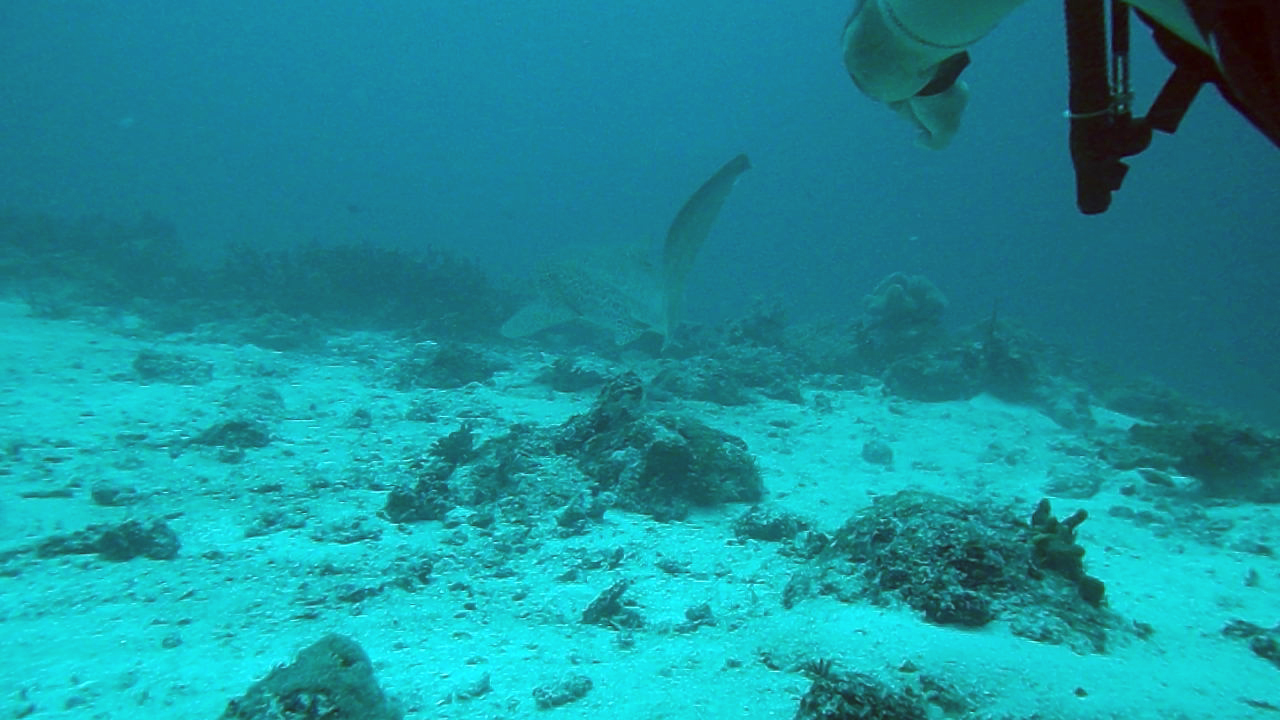Tawny nurse shark - Nebrius ferrugineus
Tawny nurse shark (Nebrius ferrugineus) is a species of carpet shark in the family Ginglymostomatidae, and the only extant member of the genus Nebrius. squalo nutrice fulvo Nebrius ferrugineus intotheblue.it
It is found widely along coastlines in the Indo-Pacific, preferring reefs, sandy flats, and seagrass beds from very shallow water to a depth of 70 m (230 ft). With a cylindrical body and a broad, flattened head, the tawny nurse shark is quite similar in appearance to the nurse shark (Ginglymostoma cirratum) of the Atlantic and East Pacific, from which it can be distinguished by its pointed-tipped dorsal fins and narrow, sickle-shaped pectoral fins. The maximum recorded length of the tawny nurse shark is 3.2 m (10 ft).

Distribution and habitat
The tawny nurse shark is widely distributed in the Indo-Pacific region. In the Indian Ocean, it is found from KwaZulu-Natal, northward to the Red Sea, Persian Gulf and India, including Madagascar, Mauritius, the Chagos Archipelago, the Seychelles, and the Maldives. In the western Pacific, it occurs from southern Japan and the coast of China to the Philippines, Southeast Asia, and Indonesia, to as far south as the northern coast of Australia. In the central Pacific, it has been reported from off New Caledonia, Samoa, Palau, the Marshall Islands, and Tahiti. Fossil teeth belonging to this species have been found in the Pirabas Formation of northern Brazil, dating back to the Lower Miocene (23–16 Ma). The presence of these fossils indicates that the range of the tawny nurse shark once extended to the tropical Atlantic Ocean, prior to the formation of the Isthmus of Panama.
An inshore species, the tawny nurse shark inhabits continental and insular shelves over sandy flats or beds of seagrass, as well as along the outer edges of coral or rocky reefs. This shark may be found from the surf zone, often in water barely deep enough to cover its body, to a maximum depth of 70 m (230 ft) on coral reefs; it is most common at a depth of 5–30 m (16–98 ft). Young sharks are generally found in the shallow areas of lagoons, while adults may be encountered across a variety of habitats.

Biology and ecology
With a more streamlined form than other nurse sharks, the tawny nurse shark is believed to be a less benthic, more active swimmer. The characteristics of its body, head, fins, and teeth are comparable to other active reef sharks sharing its range, such as the sicklefin lemon shark (Negaprion acutidens). Tawny nurse sharks are primarily nocturnal, though they are said to be active at all hours off Madagascar, and in captivity they will become diurnally active if presented with food. During the day, groups of two dozen or more sharks can be found resting inside caves and under ledges, often stacked atop one another. Individual sharks have small home ranges that they consistently return to each day.
The tawny nurse shark has few natural predators; attacks on this species have been reported from bull sharks (Carcharhinus leucas) and great hammerheads (Sphyrna mokarran), while the related nurse shark has been known to fall prey to tiger sharks (Galeocerdo cuvier) and lemon sharks(Negaprion brevirostris). Known parasites of this species include five species of tapeworms in the genus Pedibothrium, which infest the shark’s spiral intestine.
https://en.wikipedia.org/wiki/Tawny_nurse_shark
